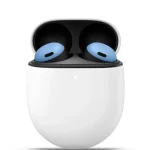- The ideal mattress for side sleepers isn’t too firm and provides good support and pressure relief.
- We tested dozens of mattresses, and the Casper Nova Hybrid is our top pick for side sleepers.
- Made with eco-friendly materials, it offers plush comfort, a cool feel, and good edge support.
- If you want options for back or stomach sleepers, check out our guide to the best mattresses.
According to the Better Sleep Council, nearly two-thirds of Americans prefer to sleep on their sides. If you’re a side sleeper, it’s crucial that you find a mattress that fits your style so that the eight-plus hours you spend in bed enhance the 16 hours you spend out of it. While we have recommendations for all types of sleepers in our guide to the best mattresses, side sleepers make up such a large portion of the population that a dedicated buying guide was warranted.
Side sleepers typically benefit from mattresses that have an average firmness or a little bit softer. You’ll also want a bed that supports you while providing pressure relief, especially around the shoulders. Fortunately, manufacturers recognize that side sleepers make up a sizable portion of their customer base and design mattresses that cater to their unique needs.
For this guide, I tested more than two dozen mattresses and consulted with Rebecca Robbins, PhD, associate scientist at Brigham and Women’s Hospital and instructor in medicine at Harvard Medical School, and Luis Javier Peña-Hernández, MD, a lung and sleep health specialist at the Pulmonary, Critical Care & Sleep Disorders Institute of South Florida.
I have been testing mattresses professionally for four years. While a mattress’s suitability is subjective, I have developed several objective tests to determine which models are best for side sleepers. Unless noted otherwise, each mattress I tested was Queen size, which is the most popular mattress size. We also list the Queen price for each of the mattresses in our guide.
I should note that I am a side sleeper but occasionally sleep on my stomach and my back. My wife mainly sleeps on her back. Between the two of us, we have all of the major sleeping styles covered. In addition to our top pick, we list other models we recommend, what we look forward to testing, and common FAQs and terms worth knowing at the end of the guide.
Here are the best mattresses for side sleepers in 2021
- Best overall mattress for side sleepers: Casper Nova Hybrid Mattress
- Best budget mattress for side sleepers: Nest Bedding Flip Hybrid Mattress
- Best foam mattress for side sleepers: Tempur-Pedic Cloud Mattress
- Best mattress for side sleepers with back pain: Leesa Hybrid Mattress
- Best customizable mattress for side sleepers: Sleep Number 360 i8 Smart Bed
James Brains/Insider
I personally tested all of the mattresses featured in this guide. In addition to sleeping on each mattress for at least two weeks, I put each through a series of objective tests. The most important factors to consider when testing a mattress are comfort, edge support, and motion isolation.
Here are the main attributes we look for and how we test them:
Comfort: This is based on my subjective experience having tested dozens of mattresses over the years. Side sleepers typically benefit from a softer mattress than other sleeping styles. I took that into consideration when evaluating comfort for this guide. Fortunately, I’m a side sleeper myself, so my subjective comfort played a big factor here. While sleeping on each mattress, I pay close attention to how firm it is, which sleeping positions my wife and I gravitate to, and if I wake up in the morning feeling refreshed or in pain. I also measure how well it dissipates heat by using a laser thermometer to compare readings before I lay down for at least an hour, as soon as I get up, and two minutes after I get up.
Motion isolation: If you’ve ever shared a bed with a partner who tosses and turns, you know how important motion isolation is to getting a good night’s sleep. I test this by setting a can of soda pop in the middle of the mattress. Then, I drop a 15-pound bowling ball from four feet above the bed so that it lands 12 inches from the can. If the can stays upright, the bed has good motion isolation. If the can falls over, the motion isolation could use some work. In future updates to this guide, watch out for more detailed assessments using a vibration meter.
Edge support: Edge support is important for feeling comfortable and supported on all parts of the bed. While we are developing an objective test to roll out in future updates to this guide, we currently use a helpful quasi-subjective test. First, I note how much the edge sags as I sit on it to put on my socks and shoes. Secondly, I lay on the very edge of the bed and slowly — and literally — roll off. If I can get to a 45-degree angle without falling, then the edge support is great. Otherwise, it could use some work.
Portability: I look at how heavy the mattress is, if it has handles, and if it flops around when I try to move or rotate it. Also, as a mattress tester who is constantly setting up and rearranging mattresses, I move the mattress and rotate it several times throughout the time it’s in my possession. My chronic lower back pain serves as a useful meter for how much effort I’m putting in, though we also look at objective measures like weight.
Trial and warranty: The most foolproof way to know if a mattress is right for you is to sleep on it for an extended period, so a long trial is a must. I look at how long the trial is (100 nights was the median for the mattresses I tested) and if there are hidden costs. Since a mattress is such a big-ticket item that should last you up to a decade, I look at the warranty length (20 years was the median for the mattresses I tested).
Setup: Unless a mattress comes with free white-glove delivery, I set up each mattress by myself. I note how long it takes, how difficult it is, if it comes with special instructions and tools, if there’s an initial odor, and if the odor dissipates and the mattress expands by bedtime (always at least 10 hours after setup). I also note whether white-glove delivery is available for a fee.
The best mattress for side sleepers overall
James Brains/Insider
The Casper Nova Hybrid Mattress is ideal for side sleepers who are looking for plush comfort, excellent heat dissipation, and good edge support.
Pros: Plush comfort is ideal for side sleepers, made with eco-friendly materials, excellent heat dissipation, good edge support, 100-night risk-free trial
Cons: Poor motion isolation, lingering new bed odor
After testing five of Casper’s best selling mattresses, my personal favorite is the Casper Nova Hybrid. It’s the softest of the company’s mattress line, and it did the best job of cradling my body and ensuring I didn’t wake up with aches and pains.
The environmentally friendly construction of the Nova Hybrid is designed for pressure-relieving comfort and breathability. The top foam layer features small perforations to help with airflow to keep you from overheating. It was effective at keeping me cool, even though I tested the bed in the summer.
The next foam layer features ergonomic zones that are firm around the lower back, waist, and hips but soft under the shoulders. Under that is another zoned support foam layer aimed at keeping your spine aligned, a must for side sleepers. Lastly, the base features individually wrapped coils with a firm border for added edge support. The Nova Hybrid‘s edge support was good and ideal for those who share a bed with partners.
The Nova Hybrid comes shrink-wrapped in a box. Once unwrapped, the mattress needed significant time to air out. I still caught whiffs of the “new bed smell” two or three days after unboxing. The mattress is somewhat hefty, but it comes with handles, which make it easy to move around.
Other than the odor, the biggest negative is the Casper Nova Hybrid has poor motion isolation, and I could clearly feel it when my wife or dog were moving around on the bed.
I recently tested Casper’s new Nova Hybrid Snow, which features materials that are supposed to provide better cooling. However, at $500 more than the Nova Hybrid, I didn’t find the Snow provided an appreciable improvement on cooling. The Nova Hybrid already does a great job of dissipating heat. Plus, it has better edge support.
The best budget mattress for side sleepers
James Brains/Insider
With its outstanding edge support, impressive heat dissipation, and sub-$800 price, the Nest Bedding Flip Hybrid Mattress is the best mattress for side sleepers on a budget.
Pros: Affordable, two levels of firmness to suit all sleeping styles, outstanding edge support, excellent heat dissipation, lifetime warranty, easy setup, made with CertiPUR-US certified foams
Cons: Heavy, poor motion isolation
The Nest Bedding Flip Hybrid Mattress gets its name from the different firmness levels on each side of the bed. One side is medium firm, which I found good for side sleeping. The other side of the reversible mattress is very firm — far too firm for side sleepers — so this review focuses on the medium firmness side.
The unboxing process was effortless and took about five minutes. However, the Flip Hybrid weighs close to 100 pounds and I needed help lifting it, though it fortunately doesn’t flop around much.
The pocket coil center of the Flip Hybrid is sandwiched by gel-infused support foam on the medium-firm side and high-density base foam on the firm side. All of the foams are CertiPUR-US certified.
The Flip Hybrid is a smart solution if you’re looking for a mattress that quickly dissipates your body heat. It quickly removed the heat built up in bed when I got up, based on my temperature readings.
The mattress also had impressive edge support. When sitting on the side of the bed, I felt supported thanks to the minimal sinkage. Lying on the edge felt comfortable. The motion isolation wasn’t as good, though. It failed the bowling ball test each time. However, the mattress does have some good bounce to it, and I found it was easy to shift from one side of my body to the other during the night.
The best mattress for side sleepers with back pain
Leesa
The combination of pocket springs and memory foam make the Leesa Hybrid Mattress ideal for side sleepers with back pain, and the excellent edge support and motion isolation make it great for couples.
Pros: Made of CertiPUR-US certified foam and pocket springs for support and breathability, motion isolation and edge support are ideal for couples, average firmness that will appeal to a broad range of sleepers
Cons: Heavy and hard to move around
For about a year, the Leesa Hybrid was the main mattress I slept on when I wasn’t testing other models. During the time I slept on it, I rarely experienced back pain, which is impressive considering my history of chronic lower back pain that’s regularly aggravated by unsupportive mattresses.
The mattress is made of pocket springs and four layers of CertiPUR-US certified foam. The top layer is cooling foam, which did its job; I stayed cool while testing, even when the heat was pushing my AC to its limits.
The next layer is contouring memory foam that offers pressure relief where your body needs it most. Individually wrapped coils are sandwiched between two core foam support layers.
The Leesa Hybrid is an ideal option for couples for several reasons. First, the average firmness caters to all sleeping styles. Second, the bed has terrific motion isolation and did well in both my objective tests and my subjective experience. Lastly, with the coils going all the way to the peripheries of the mattress, the Leesa Hybrid has excellent edge support.
The biggest negative is its weight. I risked aggravating my back and decided to unbox the 142-pound King mattress on my own. Even the Queen weighs 115 pounds, which is more than most mattresses. When it was time to replace the Leesa Hybrid, I relied on the white-glove delivery people with their young backs to remove it for me.
Read our full Leesa Hybrid Mattress review
The best foam mattress for side sleepers
James Brains/Insider
The Tempur-Pedic Cloud Mattress features contouring foam that cradles side sleepers of all body types while providing excellent heat dissipation and pressure relief.
Pros: Most comfortable mattress I’ve slept on, three layers of supportive and comforting CertiPUR-US certified Tempur foam that caters to all sleeping types, outstanding motion isolation, great heat dissipation, easy to move around
Cons: No white-glove delivery, unimpressive edge support, shipping charge is deducted from your refund if you choose to return your bed
For my body type and sleeping style, the Tempur-Pedic Cloud Mattress is the most comfortable mattress I’ve slept on. Each night on the Cloud, I fell asleep within a few minutes, and it kept me cool through the night. I didn’t want to give it up to test the next mattress.
While firmer mattresses aren’t generally recommended for side sleepers, the Tempur-Cloud bucks the norm thanks to the outstanding pressure relief provided by the company’s patented foam. The top layer features this CertiPUR-US certified foam designed to cushion your pressure points. The next layer, also Tempur material, is firmer and adapts more slowly to your body for additional pressure relief. Finally, the base foam layer offers support and durability.
Setup was a snap thanks to the light weight of the mattress and the easy-to-maneuver duffel bag-like packaging. While it had a bit of an initial odor, it was gone by bedtime 10 hours later.
The Tempur-Pedic Cloud does a great job of dampening motion transfer. Not only did it pass our bowling ball test, but when my wife and dog moved around in the night, I didn’t notice.
The Cloud isn’t perfect, though. The foam sinks significantly when you sit on the edges, and when I lay close to the edge, I felt like I was going to fall off. All-foam mattresses also aren’t for everyone, especially those that like some bounce to their mattress.
Finally, Tempur-Pedic’s policies leave something to be desired: It doesn’t offer white-glove delivery for the Cloud, the company deducts $175 from your refund if you decide to return your mattress, and the 90-night sleep trial and 10-year warranty are the shortest of the beds in our guide.
Read our full Tempur-Pedic Cloud Mattress review
The best customizable mattress for side sleepers
James Brains/Insider
The Sleep Number 360 i8 Smart Bed is designed for couples with different comfort preferences thanks to the 20 firmness levels that are independently adjustable on each side.
Pros: Automatic air adjustments based on sleeping position, built-in sleep tracker, white-glove delivery included, good edge support, 20 firmness options make it ideal for all sleeping styles
Cons: Poor heat dissipation, poor motion isolation, tough to move
What do you do if you and your partner have completely different firmness preferences or sleep styles? Get an adjustable airbed. The Sleep Number 360 i8 Smart Bed is the best I’ve tested and has features you won’t find in other adjustable mattresses.
There are 20 firmness options, or “Sleep Numbers,” and each side is independently adjustable so you can have a softer experience (my Sleep Number is 35), while your partner might prefer something firmer (my back-sleeping wife prefers 80).
As someone who shifts from one side to the other with occasional pit stops on my stomach or back, I love the adjustable air option in the SleepIQ app (available for iOS and Android). When you activate this feature, the 360 i8 Smart Bed automatically adjusts the firmness as you shift positions to provide you with consistent comfort and pressure relief.
Another great feature of the app is sleep quality monitoring and recommendations. As it collects data about your habits, it gives personalized recommendations for how to improve your sleep. However, I found the SleepIQ app’s sleep data wasn’t as accurate as my Garmin Forerunner 945 smart watch, but Tempur-Pedic is constantly making tweaks to improve the app. I noticed minor improvements even during the month I tested the bed.
Sleep Number has its own team that comes into your home to set up your mattress and ensure it pairs with your phone. The white glove delivery took about 45 minutes.
While I never felt like I would fall off when lying on the edge of the bed, there was significant sinkage when I sat on the edge to put on my socks and shoes. Another negative is the motion isolation: it failed my bowling ball test on every firmness setting.
What else we tested
James Brains/Insider
We’ve tested dozens of mattresses over the years, and there are none that we outright don’t recommend. Every mattress we’ve tested could potentially be a good fit for the right individual. However, here are a few that missed the cut for our guide but that side sleepers might want to consider.
What else we recommend and why:
Under $1,100
Nectar Memory Foam: The 365-night risk-free trial and lifetime warranty are obvious pros of this mattress. Additionally, it was easy to set up and move around, has great motion isolation and heat dissipation, and is constructed from CertiPUR-US certified foams. The Nectar mattress just wasn’t tops in any of our categories. Subjectively, I didn’t find it particularly comfortable, and the edge support was poor.
Bear Pro Mattress: With its breathable Celliant cover and foam layers, the Bear Pro is terrific for a cool sleep. Setup was effortless, though the mattress experienced some damage in transit. The bed has impressive motion isolation. However, the edge support was poor, and while it’s comfortable, it wasn’t noteworthy enough to earn a top spot in any of our categories. Read our full review.
Bear Mattress: In a previous version of this guide, the Bear Mattress was the pick for athletes because of its Celliant technology, which is supposed to aid in faster recovery and better temperature regulation. That may be so, but we removed the category because we didn’t find it as useful as our current categories. Also, after testing the Bear firsthand, I found it was too firm for side sleeping. We look forward to testing the Bear Hybrid, which is softer.
Under $2,000
DreamCloud Premier Hybrid Mattress: We named this mattress the best overall pick in our guide to the best mattresses. So, why isn’t it a top pick in any of our side sleeper categories? The DreamCloud Premier just wasn’t as comfortable for side sleeping in my subjective opinion. If I had to rank it, it would be the fourth most comfortable mattress I’ve slept on behind the Tempur-Pedic Cloud, Leesa Hybrid, and Casper Nova Hybrid. But when you take all factors into consideration — including the 365-night trial and lifetime warranty — this is an outstanding mattress worth your consideration.
Birch Mattress by Helix: If we had a best latex mattress for side sleepers category, the Birch Mattress would be our pick, provided you spring for the plush mattress topper add-on ($450). The eco-friendly latex is responsive, offering nice bounce and easy mobility on the bed while still dampening motion transfer. The biggest negatives are that the topper doesn’t attach to the mattress and is slightly smaller than the bed.
Nectar Lush Mattress: On the other hand, if you get cold at night, the Nectar Lush may be more to your liking. Made of all CertiPUR-US certified foam, this bed held onto heat more than any other mattress we tested. It also comes with a 365-night risk-free trial and a lifetime warranty.
Over $2,000
Saatva Solaire Adjustable Mattress: If our customization pick isn’t available or you just don’t want a Sleep Number mattress, the Solaire is an excellent option. It has 50 firmness options, comes with white-glove delivery, and has better edge support than the Sleep Number. It’s the mattress my teenager sleeps on. I prefer the Sleep Number, though, because of the automatic adjustable air feature and sleep monitoring. Read our full review.
Purple Hybrid Premier Mattress: If you tend to overheat at night, we strongly recommend considering the Purple Hybrid Premier. It has excellent heat dissipation, comes with free white-glove delivery, and the patented Purple grid offers outstanding pressure relief. The biggest negatives are it weighs 145 pounds (so don’t plan on moving it) and that it failed our motion isolation tests. It comes in three-inch and four-inch-thick grid sizes. I tested both and found they were both great for side sleeping, but the 4 was a little bit more comfortable.
For a full listing of the mattresses we’ve tested, check out our guide to the best mattresses.
What we’re testing next
James Brains/Insider
We’re constantly testing new mattresses and re-testing our top picks to determine the best ones. Here’s what we’re currently testing and considering for inclusion in this guide:
Helix Midnight: This mattress appeared in a previous iteration of this guide, but I have yet to test it personally. We look forward to rectifying that and seeing if it lives up to the hype.
Helix Midnight Luxe: The Midnight Luxe is an upgrade to the Midnight. Both are supposed to be excellent for side sleepers, only the Luxe also offers a quilted pillow top, zoned lumbar support, and a breathable Tencel cover.
Bear Hybrid: We recommend two Bear mattresses and are excited to test this because it’s Bear’s softest mattress, which suggests it might be good for side sleeping.
FAQs
James Brains/Insider
What should side sleepers look for in a mattress?
Dr. Rebecca Robbins, PhD, associate scientist at Brigham and Women’s Hospital and instructor in medicine at Harvard Medical School, recommends shopping around before choosing a mattress and trying in person if you can. “The most important thing when it comes to buying a mattress is making sure that you can lie down on the mattress,” said Robbins. “The ability to lie down on it is key because then you can see if the mattress will support you. You won’t know until you try. So trying is key.”
Unfortunately, many folks still feel unsafe visiting showrooms and many remain closed due to the coronavirus pandemic. Thankfully, our mattress picks come with sleep trials of at least 90 nights. So, if you find the bed isn’t right for your sleeping style, you can return it.
Robbins warned about the environmental implications of this policy, though. “It is nice, of course, to be able to return the mattress if it’s not suiting your personal preferences,” she said. “But, some of the mattresses will unfortunately go into a landfill after they’re returned, which is a little bit hard on the environment, but it is good to have the ability to return the direct-to-consumer options.”
What types of mattresses are best for side sleepers?
There are essentially four main types of mattresses on the market these days: foam, hybrid/innerspring, latex, and adjustable airbeds. Though no one type is the best or worst for side sleepers, they each have their pros and cons.
Foam: Popularized by the bed-in-a-box industry, foam mattresses feature layers of gel-infused foam, open-cell foam, or viscoelastic memory foam. The best foam mattresses adjust to the contours of your side-sleeping body for optimal spinal alignment and pressure relief. All-foam mattresses tend to be more affordable than other varieties, but they are likelier to trap heat.
Hybrid/innerspring: Both hybrid and innerspring mattresses feature metal coils that add durability, airflow, and support. Though the line between the two types of beds gets blurrier each year, traditional mattresses with pillowtops are generally called innerspring mattresses, while hybrids typically arrive at your door in a box and feature latex or memory foam. However, you can find innerspring beds-in-a-box and hybrids with pillowtops. The suitability of these mattresses for side sleepers will depend on the model, but consider a bed with a pillowtop for the added softness that side sleepers typically need.
Latex: Natural latex mattresses are usually more eco-friendly than the other alternatives. Look for OEKO-Tex or Greenguard Gold certification. As far as feel, latex is more responsive than other materials. It quickly contours to your body to relieve your pressure points. Plus, the responsiveness makes it easier for you to move around on your bed. You can also count on a cooler sleep, which makes it ideal for hot side sleepers.
Adjustable or airbeds: Adjustable airbeds feature a combination of foam, latex, wool, or other layers and air chambers to which you can add or remove air to fit your comfort needs. Though they cost more than the other varieties, adjustable mattresses are ideal for couples who have drastically different firmness preferences since you can typically adjust the air of the two sides independently. Also, as your body and sleep preferences change, the feel of your mattress can change with you, making this an ideal long-term solution.
What firmness is best for side sleepers?
Dr. Luis Javier Peña-Hernández, a lung and sleep health specialist at the Pulmonary, Critical Care & Sleep Disorders Institute of South Florida, recommends mattresses that are not too firm. “Vast research exists to support side sleepers benefit from medium-firm mattresses to support pressure point relief,” said Peña-Hernández.
Robbins agreed. “You are trying to support your spinal column as your body is on its side. So you want to think about something that’s not going to be super firm,” she said. “So, a rock-hard mattress isn’t going to be ideal for a side sleeper. If you imagine the body, all of its curves, as a side sleeper, your hips, your spinal column, your cervical spine, all of those points ideally need a little bit of support. So, if you have something that’s more cushiony supportive but has a little bit of a plush top, that might be a better option for a side sleeper.”
Only one of our picks is firmer than average, the Tempur-Pedic Cloud, but I found the mattress’ foam did an excellent job of contouring to my side-sleeping body and offering pressure relief, support, and spinal alignment.
What if I’m a side sleeper and my partner is not?
“There are mattress pads you can get if you have a mattress and one partner is not particularly comfortable and the other is,” said Robbins. “It is one stopgap measure if you’re not in the market for a new mattress.”
However, she added, “There’s actually a huge proportion of couples that sleep apart. If you think about it, it’s nice to have some time to cuddle before bedtime, but when you’re asleep, you’re not going to be able to spend quality time with your spouse. So, if it means sleeping in different bedrooms, either because one partner snores or one partner isn’t happy with the mattress, then that’s absolutely okay. Furthermore, a good night’s rest will allow you to be a better partner to that person you share your life with. So, prioritizing sleep is really critical for couples.”
If separate beds or bedrooms isn’t an option for you, we suggest an adjustable air bed that allows you to independently customize the firmness of each side of the bed. Our top pick for customization in this guide and our best mattress guide is the Sleep Number 360 i8 Smart Bed, which has 20 firmness options.
For more answers to your mattress questions, check out our guide to the best mattresses.
Glossary
CertiPUR-US certified: CertiPUR-US is a not-for-profit certification program that evaluates the foams used in consumer products to ensure they are made without phthalates, formaldehyde, heavy metals, hazardous flame retardants, ozone depleters, and other harmful substances. Each foam must also emit less than 0.5 parts per million of volatile organic compounds to earn certification.
Edge support: Edge support is important if you like to sit on the side of your bed or tend to gravitate to the edges when sleeping. The term refers to how supportive a mattress is to its very periphery. Some mattresses will sag significantly as you get to the edge. We say these models have poor edge support.
Hybrid: When referring to mattresses, a hybrid is one that has coils and another material, typically foam or latex. Hybrid mattresses are a lot like traditional innerspring mattresses, and “hybrid” and “innerspring” are often used interchangeably. We think the line between the two mattress types is so blurred these days that there isn’t much value in differentiating between them.
Motion isolation/motion transfer: These terms are two sides of the same coin. Motion isolation refers to the mattress’s ability to keep movement on one part of the bed from disturbing other parts of the bed. So if your partner gets up in the night, you aren’t jostled. A bed with good motion isolation will have minimal motion transfer. A mattress with awful motion isolation will have easily noticeable motion transfer.
Check out more mattress guides
James Brains/Insider
Powered by WPeMatico






